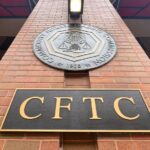Last year saw the softest home-price growth in more than 10 years, according to an analysis by ICE Mortgage Technology. Despite that and other positives, the LA wildfires are still making an impact on the housing market at the local and national levels.
On Monday, ICE released its February 2025 Mortgage Monitor report, which is based on the company’s public datasets. The reports analyzes “tens of millions of loans across the spectrum of credit products and more than 160 million historical records.”
According to February’s report, annual home-price growth ended 2024 at 3.4%. That was softer than in 2011 — when the market was still recovering from the housing crash and Great Recession. Alongside that, inventory levels also showed promise, increasing by 22% during the year. Inventory reached its highest level since mid-2020, with Southern states leading the way.
Andy Walden, the company’s head of mortgage and housing market research, highlighted markets in the South and West as hubs for improvement. “At the current rate of improvement, another 15% of markets, primarily in the South and West would be on pace to see inventory levels normalize this year,” he said in a statement.
Markets in the Midwest and Northeast not only aren’t keeping up with the inventory growth in the South and West, they might also be major contributors to U.S. home-price growth, according to Walden.
“Given the disparity of inventories across the country, it is no surprise to see 18 of the 20 strongest housing markets from a price growth perspective located in inventory-starved portions of the Midwest and Northeast,” he added.
Despite normalizing inventory levels, mortgage delinquencies continue to present a challenge. National mortgage delinquency rates sit below pre-pandemic levels. But Federal Housing Administration (FHA) and U.S. Department of Veterans Affairs (VA) mortgages tell a different story. ICE reported that FHA and VA delinquencies have steadily risen since the pandemic. Meanwhile, conventional and portfolio-managed loans are still performing relatively well.
These delinquencies evidently aren’t sending more homeowners into foreclosure. ICE said that foreclosures have dropped to record lows, with the exception of the post-pandemic foreclosure moratorium period.
Moving away from the broader market, ICE addressed the impacts of the LA wildfires. According to Walden, many homeowners in Southern California missed mortgage payments in the aftermath of the deadly blazes.
“ICE’s McDash Flash daily data suggests that nearly 5% fewer homeowners inside California’s Palisades and Eaton fire zones had made their January mortgage payment by mid-month, when compared with the same time in December,” Walden said. He also noted that homeowners who did pay likely made payments before the fires, so more accurate data on missed payments will come next month.
Beyond that, municipal bonds aren’t safe from the wildfires either. ICE said that 140 municipalities reported having some exposure to the wildfires. “This represents perhaps the first time the bond market has experienced a nearly immediate repricing of municipal debt due to a natural disaster,” Walden explained.




